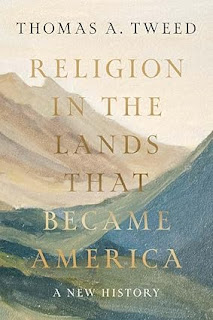 on the intellectual history of Tibetan pilgrimage, and also writes about karma, Buddhist ethics, and Buddhist approaches to addiction and recovery.
on the intellectual history of Tibetan pilgrimage, and also writes about karma, Buddhist ethics, and Buddhist approaches to addiction and recovery.
Hartmann applied the “Page 99 Test” to her new book, Making the Invisible Real: Practices of Seeing in Tibetan Pilgrimage, and reported the following:
Readers who open Making the Invisible Real: Practices of Seeing in Tibetan Pilgrimage to page 99 will learn about a 17th century Tibetan Buddhist author named Chökyi Drakpa, whose Guidebook to Gyangme: Vajradhāra's Feast is the focus of that chapter. Page 99 attempts to establish a date of composition for the text and gives background on the author and affiliation with the Drikung Kagyu school of Tibetan Buddhism.Visit Kate Hartmann's website.
Readers of page 99 might worry that the whole book is going to be boring and technical, but the rest of the chapter analyzes Vajradhāra's Feast itself, which narrates Chökyi Drakpa's adventures "opening the doors" of a holy mountain. According to Tibetan Buddhist pilgrimage tradition, holy mountains like Gyangme possess great numinous power, but this attracts fierce demons who try to keep the "doors" to the mountain closed to outsiders. To "open" the mountain and make it safe for pilgrims, a powerful master (the "vajradhāra" of the text's title) must go to the mountain, interpret the mysterious geomantic signs, defeat the demons with tantric magic, and obtain a vision of the mountain's true identity as a mandala–a holy palace for a tantric Buddha. Vajradhāra's Feast is Chökyi Drakpa's claim to have done all this and lived to tell the tale.
The book explores this and many other texts about Tibetan pilgrimage to holy mountains, such as advice texts, guidebooks, philosophical debates, diaries, and founding accounts. I'm interested in the goal that they share: transforming pilgrims' perception of the holy mountain. These texts tell pilgrims to overcome their ordinary perception of the mountain as rocks and snow and instead learn to see it as a divine mandala. Transforming perception is a difficult goal! The tradition knows that, and so I examine the methods the Tibetan pilgrimage tradition has developed to try and overcome these difficulties and learn to see the ordinarily invisible realities.
This may seem like a niche concern, but religious traditions from many times and places have shared similar goals of learning to perceive ordinarily invisible beings or realities. My book hopes to help us understand how that works.
I would say that my book fails the Page 99 Test in that page 99 deals with boring historical dating and doesn't give much sense of the overall flavor or argument of the book, but you wouldn't want a history book without all the dull legwork!
--Marshal Zeringue























